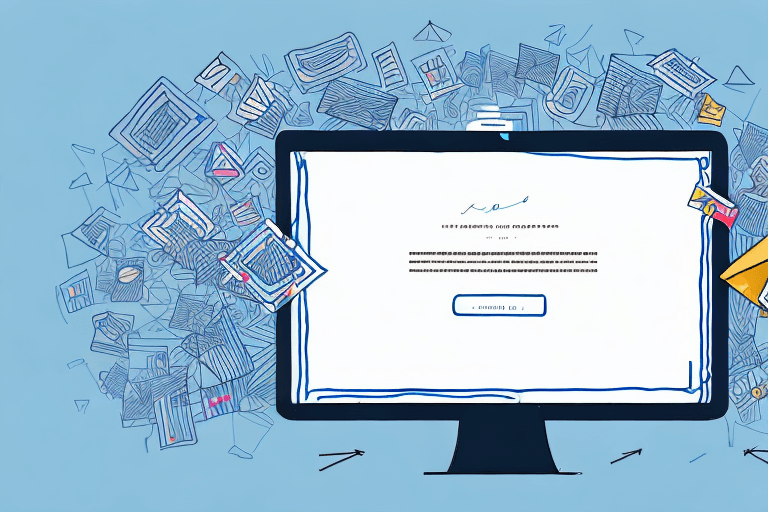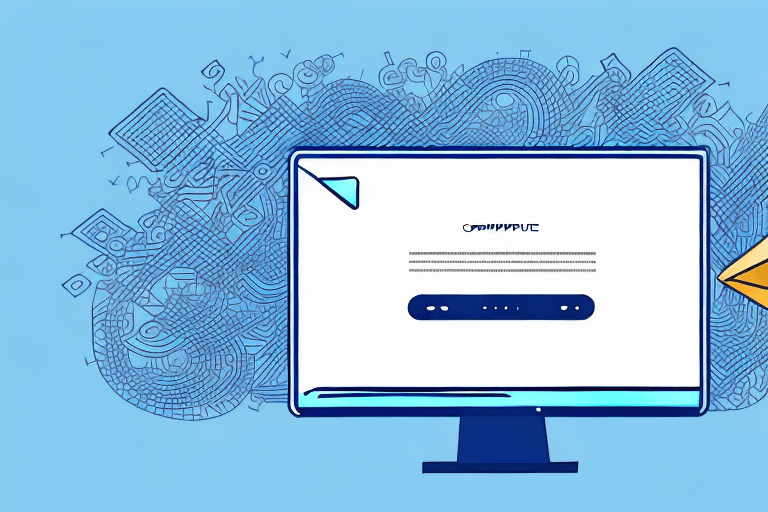In recent years, there has been a growing trend of individuals including their preferred pronouns in their email signatures. While this practice may seem like a small step towards inclusivity, it has generated a fair amount of controversy, prompting many to question whether or not it is truly necessary or even helpful. In this article, we will explore the pros and cons of adding pronouns to email signatures.
Understanding the Pronoun Debate
The use of preferred pronouns has become a hot-button issue in recent years, mainly due to the increasing visibility and acceptance of nonbinary and transgender individuals. Pronouns are an essential aspect of how we communicate and identify ourselves, often serving as an extension of our gender identity. As such, many have pointed out that using the right pronouns can have a significant impact on an individual's well-being and sense of self.
It is important to understand that gender identity is a deeply personal and complex aspect of an individual's identity. For many nonbinary and transgender individuals, being referred to by the wrong pronoun can be a source of significant distress and can contribute to feelings of invalidation and marginalization.
However, the debate over pronouns has also led to significant pushback, with some arguing that the emphasis on specifying pronouns can be excessive and unnecessary, especially in professional settings. Some individuals may feel uncomfortable or unsure about how to navigate conversations around pronouns, leading to tension and discomfort in the workplace.
The Rise of Pronoun Inclusion in Email Signatures
One of the most common ways that individuals include their preferred pronouns is by including them in their email signatures. This trend has become increasingly prevalent in recent years, with many companies encouraging employees to indicate their pronouns in their email signatures as a way to promote inclusivity and diversity.
By including pronouns in email signatures, individuals are able to signal to others their gender identity and help create a more inclusive environment. This can be particularly important in professional settings, where individuals may not have the opportunity to express their gender identity in other ways.
Arguments for Including Pronouns
Proponents of adding pronouns to email signatures argue that it can help promote inclusivity and make nonbinary and transgender individuals feel more comfortable and seen. It can also serve as a signal to others that the individual is open and accepting of different gender identities and expressions.
Furthermore, some experts suggest that including pronouns in email signatures can help reduce the burden on individuals who may feel compelled to constantly correct others or clarify their gender identity. By including pronouns upfront, individuals are able to avoid potentially uncomfortable or awkward conversations around their gender identity.
Concerns and Criticisms
Despite these arguments, there are also concerns surrounding the practice of adding pronouns to email signatures. One common criticism is that it can alienate those who are not familiar with the concept of preferred pronouns or who simply do not see the value in specifying them.
Additionally, some argue that the practice can be performative and superficial, serving more as a way to virtue signal than a genuine attempt at promoting inclusivity. It is important to recognize that including pronouns in email signatures is just one small step towards creating a more inclusive environment. It is essential that individuals and organizations take concrete actions to support nonbinary and transgender individuals beyond simply including pronouns in their email signatures.
Finally, others worry that the emphasis on pronouns can be excessive and can lead to unintended consequences, such as forcing individuals to reveal personal information or making them feel uncomfortable. It is important to approach conversations around pronouns with empathy and understanding, recognizing that gender identity is a deeply personal and complex aspect of an individual's identity.
Potential Drawbacks of Including Pronouns in Email Signatures
While including pronouns in email signatures has become increasingly common in recent years, the practice is not without its potential drawbacks. Here are some of the concerns that have been raised:
Misinterpretation and Miscommunication
One potential issue with including pronouns in email signatures is that they can be misinterpreted or create confusion. For example, some individuals may assume that the pronouns listed are the only ones the individual uses, even if they are not expressed as such. This can lead to misunderstandings and miscommunications, especially in situations where the individual's gender identity may not be immediately apparent.
It's important to note that while including pronouns in email signatures can be a helpful way to signal respect and inclusivity, it's not a foolproof method for determining someone's gender identity. Some individuals may not feel comfortable sharing their pronouns for personal reasons, while others may use different pronouns in different contexts.
Privacy and Personal Boundaries
Another concern is that including pronouns in email signatures can breach individuals' privacy and personal boundaries. Some may feel uncomfortable sharing this information with colleagues or clients they do not know well, while others may worry that it could be used against them in some way.
Furthermore, the practice can inadvertently force nonbinary and transgender individuals to out themselves, potentially exposing them to discrimination or negative reactions from others. It's important to respect individuals' autonomy and allow them to disclose their gender identity on their own terms.
Unintended Consequences for Nonbinary and Transgender Individuals
Ironically, including pronouns in email signatures can have unintended consequences for nonbinary and transgender individuals. While the practice may seem like a way to promote inclusivity, it can also create pressure for individuals to conform to certain gender identities that may not accurately reflect how they feel.
For example, a nonbinary individual may feel compelled to list "he/him" or "she/her" in their email signature simply because those are the only options provided. This can lead to feelings of discomfort and dysphoria, further exacerbating the challenges that nonbinary and transgender individuals already face.
The Risk of Tokenism
Lastly, some argue that including pronouns in email signatures can be a form of tokenism or performative allyship, where individuals merely pay lip service to the idea of inclusivity without actually taking concrete steps to support marginalized groups. This can ultimately do more harm than good, trivializing the struggles that nonbinary and transgender individuals face on a daily basis.
It's important to remember that inclusivity is a ongoing process, and including pronouns in email signatures should be just one small part of a larger effort to create a more welcoming and equitable workplace.
Ultimately, the decision to include pronouns in email signatures should be left up to each individual. While the practice can be a helpful way to signal respect and inclusivity, it's not without its potential drawbacks, and individuals should feel empowered to make their own choices about how they present themselves to the world.
In addition to the alternatives mentioned above, there are several other ways organizations can promote inclusivity and respect for individuals' gender identities.One approach is to offer training sessions or workshops on gender identity and pronoun usage. These sessions can provide employees with a deeper understanding of the nuances of gender and how to effectively communicate with colleagues and clients of all gender identities.Another way to promote inclusivity is to create gender-neutral spaces within the workplace. This can include restrooms, changing rooms, and other facilities that are accessible to all employees, regardless of their gender identity.Organizations can also make efforts to ensure that their policies and practices are inclusive of all gender identities. For example, they can offer parental leave to all employees, regardless of their gender, or provide health insurance coverage for gender-affirming treatments and surgeries.Finally, it is important to recognize that gender identity is a complex and deeply personal aspect of a person's identity. By creating a culture of respect and inclusivity, organizations can help ensure that all employees feel valued and supported in their work environment.## Navigating Professional Communication in a Changing World
Balancing Inclusivity and Practicality
Ultimately, the decision to add pronouns to email signatures comes down to a delicate balance between inclusivity and practicality. While it is important to promote diversity and create safe spaces for nonbinary and transgender individuals, it is also essential to consider the potential drawbacks and unintended consequences of specific practices.
One potential drawback of adding pronouns to email signatures is that it can be seen as performative or tokenistic. It is important to ensure that the practice is not just a surface-level attempt at inclusivity, but rather a genuine effort to create a more welcoming and accepting environment for all individuals.
Another consideration is that the practice may not be feasible for all individuals or organizations. For example, in industries where email signatures are heavily regulated or standardized, adding pronouns may not be possible without significant changes to established protocols.
Adapting to Evolving Norms and Expectations
As the world continues to evolve and become more aware of the nuanced and diverse experiences of different individuals, it is essential that we continually evaluate our practices and adapt to changing norms and expectations. By doing so, we can create a more equitable and just world for all.
One way to adapt to evolving norms and expectations is to actively seek out feedback from marginalized individuals and communities. By listening to their experiences and perspectives, we can gain a better understanding of how to create more inclusive and supportive environments.
It is also important to recognize that what may have been considered acceptable or appropriate in the past may no longer be so. As societal norms shift and evolve, it is our responsibility to stay informed and up-to-date on best practices for promoting inclusivity and respect.
Fostering a Respectful and Supportive Work Environment
Ultimately, the most important thing organizations can do is foster a respectful and supportive work environment where individuals feel valued and accepted for who they are, not how they express themselves. By promoting inclusivity and celebrating diversity, companies can not only attract and retain top talent but also make a positive impact on the larger world.
One way to foster a respectful and supportive work environment is to prioritize education and training on issues related to diversity and inclusion. By providing employees with the tools and knowledge they need to engage with different perspectives and experiences, organizations can create a more empathetic and understanding workplace.
Another important aspect of fostering a supportive work environment is to actively address and challenge instances of discrimination or prejudice. By taking a zero-tolerance approach to discriminatory behavior, organizations can send a clear message that they are committed to creating a safe and welcoming environment for all employees.




